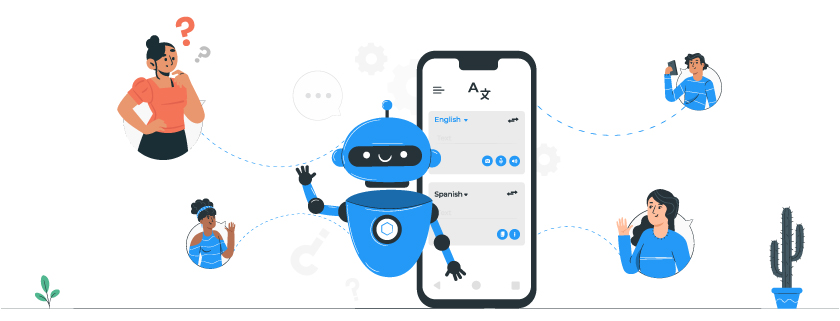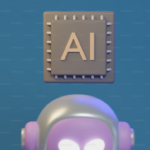Have you ever wondered how AI translation works? How is it possible for a machine to accurately translate languages and enable multilingual communication? In this article, we will unravel the technology behind AI translation and delve into the fascinating world of neural networks, language processing, and contextual analysis.
When it comes to AI translation, neural networks play a crucial role. These complex computational models are designed to mimic the human brain’s ability to process information. By using vast amounts of data, these networks can learn patterns and relationships between different languages. With each input sentence and its corresponding translated output, the neural network gradually improves its translation accuracy over time. It’s truly remarkable how machines can be trained to understand and interpret multiple languages through this sophisticated process. So let’s dive deeper into the inner workings of AI translation and explore the various techniques used in training these models!
Neural Networks and Language Processing
If you really want to understand how AI translation works, you need to grasp the intricate workings of neural networks and their ability to process language. Neural networks are a type of artificial intelligence that mimic the structure and functioning of the human brain. They consist of interconnected nodes, called neurons, which work together to process information. In the context of language processing, neural networks analyze text and learn patterns in order to make accurate translations.
When it comes to translating languages, neural networks break down sentences into smaller parts, such as words or phrases. Each part is represented by a numerical vector that captures its meaning in relation to other parts of the sentence. These vectors are then fed into layers of neurons that perform calculations and transformations on the data. Through countless iterations and training examples, the network learns how different words or phrases relate to each other in different languages.
The power of neural networks lies in their ability to generalize from these learned patterns. They can recognize similar structures and meanings across different languages, allowing them to generate accurate translations even for sentences they have never encountered before. By continuously refining their understanding through feedback loops and large amounts of data, neural networks become increasingly proficient at translating between languages. So next time you use an AI translator, remember that behind its seemingly effortless operation lies a complex network capable of deciphering language with remarkable accuracy.
Training the AI Translation Models
When training the AI translation models, it is crucial to emphasize the importance of data quality and diversity. To ensure accurate and reliable translations, these models need to be trained on a wide range of high-quality data from different languages. The more diverse and representative the training data is, the better the model will be at understanding and translating various language patterns.
In order to train the AI translation models effectively, a large amount of parallel text data is required. This means having pairs of sentences in two different languages that convey the same meaning. These sentence pairs are used to teach the model how words and phrases in one language correspond to those in another language. Additionally, it is important for this training data to cover a variety of domains and topics, as different industries or fields may have specific vocabulary or language nuances that need to be captured accurately by the model.
Once the training data has been collected, it goes through a process called pre-processing. During this stage, any noisy or irrelevant information is removed from the dataset in order to improve its quality. Next comes tokenization, where each word or character in a sentence is assigned an ID number that represents its position within that sentence. This helps break down sentences into smaller units for easier processing by neural networks.
After pre-processing and tokenization, the model undergoes training using techniques such as supervised learning with deep neural networks. During this process, the model learns how to predict appropriate translations based on input sentences and their corresponding translations from the training dataset. The more iterations of this training process are done with high-quality data, the better equipped the AI translation model becomes at accurately understanding and translating multilingual text.
Overall, when training AI translation models, ensuring data quality and diversity plays a vital role in producing accurate translations across multiple languages. By providing extensive parallel text datasets covering various domains and topics while following rigorous pre-processing techniques like tokenization, these models can continually improve their ability to understand complex linguistic structures and deliver high-quality translations by AI content optimization.
Natural Language Understanding and Contextual Analysis
As we delve deeper into the world of AI translation models, it’s fascinating to explore how these systems grasp the intricacies of language and context. Natural Language Understanding (NLU) plays a crucial role in enabling accurate translations by allowing the AI model to comprehend the meaning behind words and sentences. The system relies on advanced algorithms that analyze grammar, syntax, and semantics to decipher the intended message. Through NLU, AI translation models can identify different parts of speech like nouns, verbs, adjectives, and adverbs, helping them understand sentence structures.
To further enhance their understanding of context, AI translation models employ contextual analysis techniques. This involves analyzing surrounding words and phrases to infer meaning based on the given context. By considering neighboring sentences or paragraphs, these systems can better interpret idiomatic expressions or ambiguous words with multiple meanings. Contextual analysis also allows AI models to recognize cultural references or slang terms specific to certain regions or communities.
In order to create imagery in your mind about how natural language understanding and contextual analysis work together in an AI translation model:
- Imagine a web of interconnected nodes representing various linguistic elements such as grammar rules, vocabulary knowledge, semantic relationships.
- Visualize these nodes lighting up as they process input text data, indicating comprehension at different levels.
- Picture a puzzle coming together as each word is analyzed individually for its part of speech before being fit into the larger sentence structure.
- Envision a deep dive into surrounding sentences and paragraphs where connections are made between related ideas or concepts for accurate translations.
This combination of natural language understanding and contextual analysis allows AI translation models to go beyond simple word-for-word translations and provide more accurate interpretations that consider the nuances of language usage across different cultures and contexts , resulting in more effective and meaningful communication between people from different linguistic backgrounds.
Handling Ambiguity and Polysemy
Imagine navigating through a labyrinth of words and their multiple meanings, as you explore the intricate process of deciphering ambiguity and polysemy in language comprehension. When it comes to AI translation, handling ambiguity and polysemy is crucial for accurate understanding and effective communication. Ambiguity refers to situations where a word or phrase can have more than one possible meaning, while polysemy occurs when a single word has multiple related meanings.
To tackle these challenges, AI translation systems utilize advanced algorithms and machine learning techniques. Through extensive training on vast amounts of language data, these systems learn to recognize different contextual cues that help disambiguate words and phrases. For example, they analyze the surrounding words, sentence structure, grammar rules, and semantic relationships to determine the most likely meaning of an ambiguous term.
Additionally, AI translation models take into account user context to further enhance accuracy. They consider factors such as the user’s location, previous queries or conversations, cultural references, and even personal preferences. By incorporating this contextual information into their analysis, AI translations are able to provide more precise interpretations that align with the intended meaning.
Handling ambiguity and polysemy is a significant aspect of AI translation technology. By employing sophisticated algorithms and leveraging contextual clues from both the text itself and user-specific information, these systems strive to provide accurate translations that capture the intended meaning behind every word or phrase. As language evolves with its inherent complexities and nuances, advancements in AI continue to push boundaries in unraveling multilingual communication for seamless global interaction.
Evaluating and Improving Translation Accuracy
To evaluate and improve translation accuracy, you must assess the effectiveness of the algorithms and techniques utilized in AI translation systems. This involves analyzing how well the system understands the source language and how accurately it translates it into the target language. Here are four key aspects to consider when evaluating and improving translation accuracy:
- Language modeling: A good language model is crucial for accurate translations. It should be able to capture the nuances of both the source and target languages, including grammar, syntax, idioms, and cultural references.
- Training data: The quality and diversity of training data used to train an AI translation system play a significant role in its accuracy. The more varied and extensive the training data is, covering different domains and dialects, the better equipped the system will be to handle a wide range of translation scenarios.
- Neural networks: Most modern AI translation systems utilize neural networks for their ability to learn patterns from large datasets. Evaluating neural network architectures can help identify which models perform best for specific language pairs or tasks.
- Feedback loops: Continuous evaluation and feedback loops are essential for improving translation accuracy over time. By collecting user feedback on translations (e.g., through user ratings or human evaluations), developers can identify areas where improvements are needed and make necessary adjustments to enhance future translations.
By considering these factors during evaluation and improvement processes, AI translation systems can strive towards achieving higher levels of accuracy in multilingual communication.
Conclusion
In conclusion, AI translation is an incredible technology that has revolutionized multilingual communication. Through the use of neural networks and language processing, AI translation models are trained to understand and translate different languages with impressive accuracy. The incorporation of natural language understanding and contextual analysis allows AI translators to grasp the meaning behind words and phrases, enhancing their ability to produce accurate translations.
Furthermore, AI translators are equipped to handle ambiguity and polysemy, ensuring that they can accurately interpret words or phrases with multiple meanings. This makes them highly reliable in producing translations that maintain the intended message and context. However, it is important to note that there is always room for improvement in translation accuracy. Evaluation measures are constantly being used to assess the performance of AI translation models, which helps identify areas for enhancement.
Overall, AI translation technology holds immense potential in bridging linguistic barriers and facilitating effective cross-cultural communication. With continued advancements in machine learning algorithms and data training techniques, we can expect even greater accuracy and efficiency from AI translators in the future. As this technology continues to evolve, it will undoubtedly play a crucial role in breaking down language barriers and fostering global connectivity.







